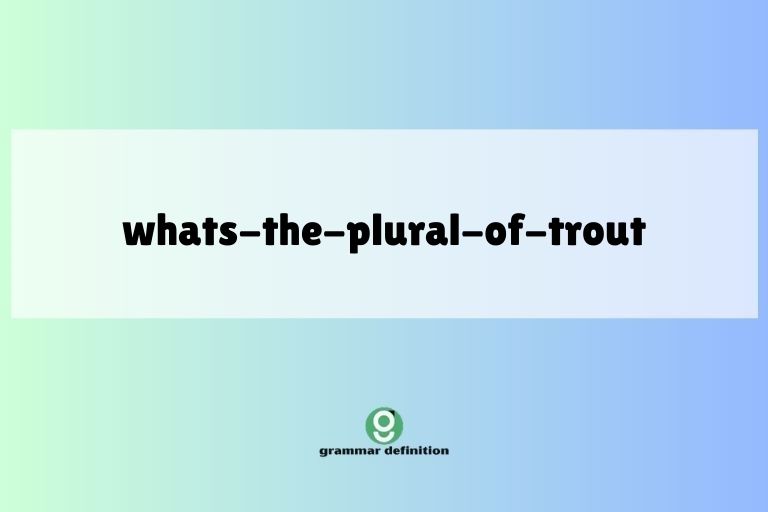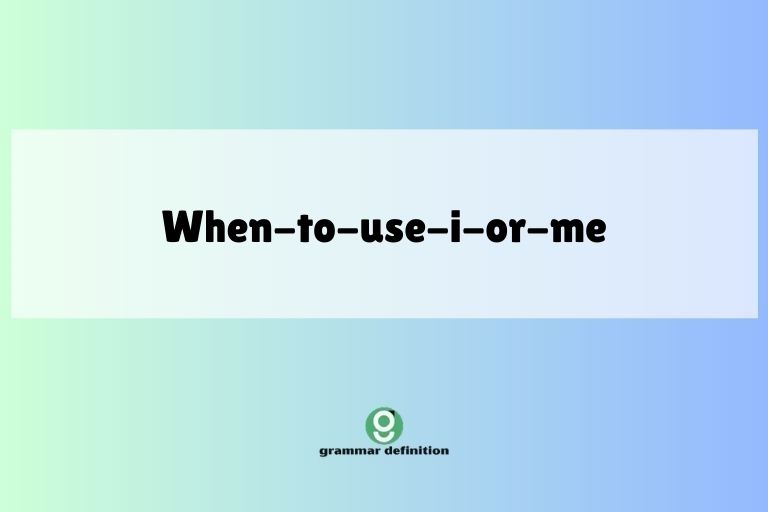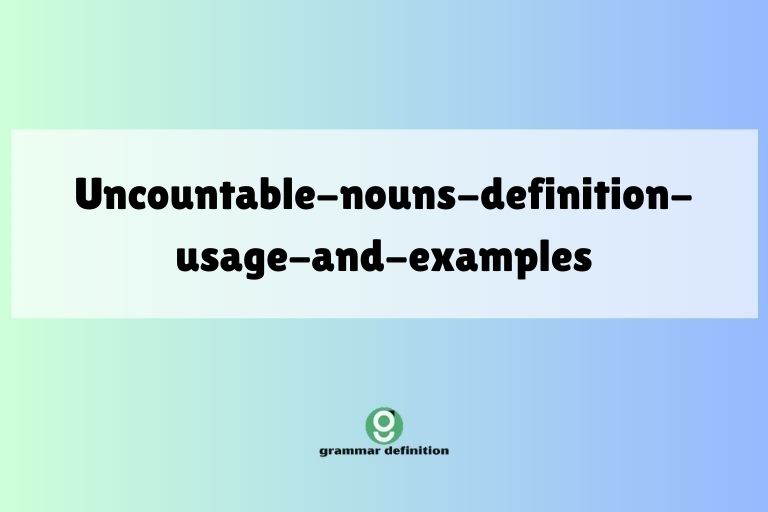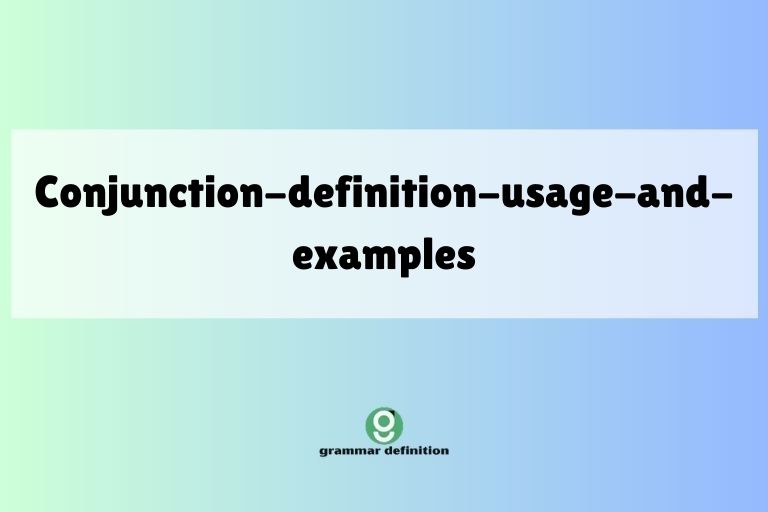Nonrestrictive Clauses: Definition, Usage, and Examples
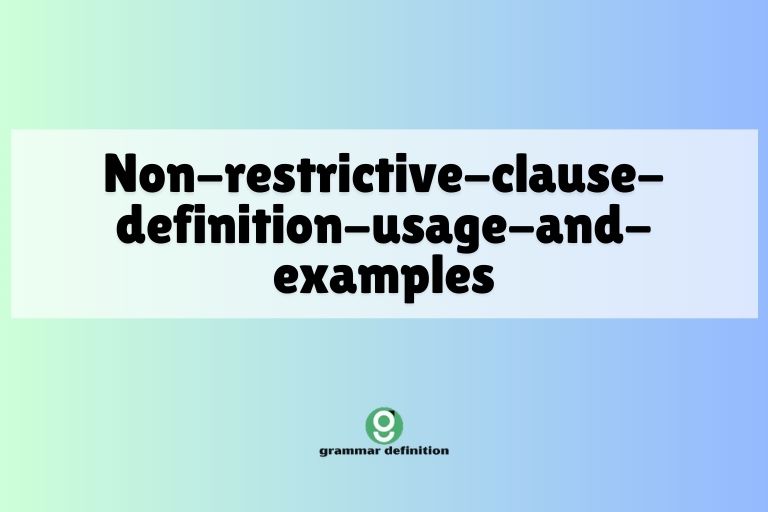
Understanding nonrestrictive clauses is crucial for mastering English grammar and writing with clarity and precision. These clauses add extra information to a sentence without being essential to its core meaning.
This article provides a comprehensive guide to nonrestrictive clauses, covering their definition, structure, usage rules, common mistakes, and advanced applications. Whether you’re a student, writer, or English language learner, this resource will equip you with the knowledge and practice to confidently use nonrestrictive clauses in your writing.
This guide offers numerous examples, tables, and practice exercises to reinforce your understanding. By the end of this article, you’ll be able to identify, construct, and effectively use nonrestrictive clauses to enhance the nuance and complexity of your sentences.
Table of Contents
- Definition of Nonrestrictive Clauses
- Structural Breakdown
- Types and Categories
- Examples of Nonrestrictive Clauses
- Usage Rules
- Common Mistakes
- Practice Exercises
- Advanced Topics
- Frequently Asked Questions
- Conclusion
Definition of Nonrestrictive Clauses
A nonrestrictive clause, also known as a nonessential clause or a parenthetical clause, provides additional information about a noun or noun phrase in a sentence. However, this information is not essential to the sentence’s core meaning.
Removing a nonrestrictive clause does not fundamentally alter the sentence’s meaning, although it may remove some detail. Nonrestrictive clauses are always set off by commas (or sometimes dashes or parentheses) to indicate their nonessential nature.
Understanding their role is key to writing clearly and effectively.
Key Characteristics:
- Nonessential Information: Adds extra details that aren’t crucial to the sentence’s main idea.
- Separation by Commas: Always set off by commas (or dashes/parentheses).
- Removability: Can be removed without changing the core meaning of the sentence.
- Introduced by Relative Pronouns or Adverbs: Often introduced by who, which, where, when, or whose.
In essence, nonrestrictive clauses function as parenthetical remarks, offering supplementary information that enriches the context but doesn’t define the subject.
Structural Breakdown
The structure of a nonrestrictive clause typically includes a relative pronoun or adverb that connects the clause to the main clause, followed by a subject and a verb. The entire nonrestrictive clause is then set off by commas.
Understanding this structure helps in identifying and constructing these clauses correctly.
Typical Structure:
Noun + , + Relative Pronoun/Adverb + Subject + Verb + , + Rest of the Sentence.
Let’s break down the components:
- Noun: The noun or noun phrase that the clause modifies.
- Commas: The commas that set off the nonrestrictive clause.
- Relative Pronoun/Adverb: Connects the clause to the main sentence (e.g., who, which, where, when, whose).
- Subject: The subject of the nonrestrictive clause.
- Verb: The verb of the nonrestrictive clause.
For example, in the sentence “My sister, who lives in London, is a doctor,” the nonrestrictive clause is “who lives in London.” “Sister” is the noun, “who” is the relative pronoun, and “lives” is the verb.
Types and Categories
Nonrestrictive clauses can be categorized based on the relative pronoun or adverb that introduces them. The most common types are those introduced by who, which, where, when, and whose. Each type serves to add different kinds of nonessential information.
Clauses Introduced by “Who”
These clauses provide extra information about people. They modify nouns that refer to individuals or groups of people.
Clauses Introduced by “Which”
These clauses add nonessential details about things or ideas. They modify nouns that refer to objects, concepts, or animals.
Clauses Introduced by “Where”
These clauses provide additional information about places. They modify nouns that refer to locations.
Clauses Introduced by “When”
These clauses add nonessential details about times or occasions. They modify nouns that refer to specific points in time.
Clauses Introduced by “Whose”
These clauses indicate possession and provide extra information about who owns something. They modify nouns to show ownership.
Examples of Nonrestrictive Clauses
Here are several examples of nonrestrictive clauses, categorized by the relative pronoun or adverb that introduces them. Each example illustrates how these clauses add extra information without being essential to the sentence’s core meaning.
Examples with “Who”
The following table provides examples of nonrestrictive clauses introduced by “who”. These clauses provide additional information about people, enhancing the description but not defining the person.
| Sentence | Nonrestrictive Clause |
|---|---|
| My father, who is a retired teacher, enjoys gardening. | who is a retired teacher |
| The author, who won several awards, is releasing a new book. | who won several awards |
| My neighbor, who is always friendly, offered to help me move. | who is always friendly |
| The doctor, who specializes in cardiology, is highly respected. | who specializes in cardiology |
| The student, who studied diligently, received an A on the exam. | who studied diligently |
| The chef, who trained in France, opened a new restaurant. | who trained in France |
| My cousin, who loves to travel, is planning a trip to Italy. | who loves to travel |
| The artist, who is known for her portraits, is exhibiting her work. | who is known for her portraits |
| The musician, who plays the piano beautifully, is giving a concert. | who plays the piano beautifully |
| The athlete, who won the gold medal, is an inspiration to many. | who won the gold medal |
| His brother, who works as an engineer, lives in another city. | who works as an engineer |
| The actress, who starred in several movies, is now directing. | who starred in several movies |
| The professor, who teaches history, is very knowledgeable. | who teaches history |
| The journalist, who writes for a major newspaper, is well-informed. | who writes for a major newspaper |
| The lawyer, who specializes in corporate law, is highly sought after. | who specializes in corporate law |
| The manager, who is very efficient, runs the team smoothly. | who is very efficient |
| The consultant, who has years of experience, offers valuable advice. | who has years of experience |
| The researcher, who is conducting important studies, is making progress. | who is conducting important studies |
| The volunteer, who dedicates her time, is helping the community. | who dedicates her time |
| The speaker, who is captivating, is delivering a powerful message. | who is captivating |
| The inventor, who created the new gadget, is quite innovative. | who created the new gadget |
| The designer, who is known for her elegance, is launching a new collection. | who is known for her elegance |
| The dancer, who moves gracefully, is performing on stage. | who moves gracefully |
| The programmer, who writes clean code, is a valuable asset. | who writes clean code |
| The therapist, who is very empathetic, helps her patients heal. | who is very empathetic |
| The coach, who motivates his team, leads them to victory. | who motivates his team |
| The pilot, who flies safely, ensures the passengers’ well-being. | who flies safely |
| The librarian, who organizes the books, helps readers find information. | who organizes the books |
| The security guard, who is always alert, ensures the building’s safety. | who is always alert |
| The waiter, who is attentive, provides excellent service. | who is attentive |
Examples with “Which”
The following table provides examples of nonrestrictive clauses introduced by “which”. These clauses add extra information about things or ideas, providing more context but not defining the object or concept.
| Sentence | Nonrestrictive Clause |
|---|---|
| The book, which I borrowed from the library, is very interesting. | which I borrowed from the library |
| The car, which is parked outside, belongs to my uncle. | which is parked outside |
| The house, which has a large garden, is for sale. | which has a large garden |
| The painting, which was created in the 18th century, is priceless. | which was created in the 18th century |
| The computer, which I bought last week, is already malfunctioning. | which I bought last week |
| The cake, which she baked for the party, was delicious. | which she baked for the party |
| The movie, which won several awards, is a must-see. | which won several awards |
| The song, which topped the charts, is very catchy. | which topped the charts |
| The idea, which he proposed at the meeting, was well-received. | which he proposed at the meeting |
| The project, which we worked on for months, is finally complete. | which we worked on for months |
| The solution, which they found after much research, was innovative. | which they found after much research |
| The strategy, which she implemented effectively, increased sales. | which she implemented effectively |
| The theory, which scientists have been studying, is quite complex. | which scientists have been studying |
| The experiment, which they conducted carefully, yielded significant results. | which they conducted carefully |
| The data, which was collected systematically, provided valuable insights. | which was collected systematically |
| The technology, which is rapidly evolving, is transforming industries. | which is rapidly evolving |
| The system, which they designed meticulously, is highly efficient. | which they designed meticulously |
| The process, which they streamlined effectively, saved time and resources. | which they streamlined effectively |
| The program, which he developed skillfully, is user-friendly. | which he developed skillfully |
| The app, which she created innovatively, is gaining popularity. | which she created innovatively |
| The product, which they launched successfully, is selling well. | which they launched successfully |
| The service, which they provide reliably, is highly valued. | which they provide reliably |
| The event, which they organized flawlessly, was a great success. | which they organized flawlessly |
| The campaign, which they executed strategically, achieved its goals. | which they executed strategically |
| The initiative, which he championed passionately, is making a difference. | which he championed passionately |
| The reform, which they implemented carefully, improved the system. | which they implemented carefully |
| The legislation, which they passed recently, is controversial. | which they passed recently |
| The policy, which they enacted thoughtfully, is having a positive impact. | which they enacted thoughtfully |
| The agreement, which they signed willingly, established cooperation. | which they signed willingly |
| The treaty, which they ratified unanimously, ensured peace. | which they ratified unanimously |
Examples with “Where”
The following table provides examples of nonrestrictive clauses introduced by “where”. These clauses add extra information about places, providing context without defining the location.
| Sentence | Nonrestrictive Clause |
|---|---|
| Paris, where I spent my honeymoon, is a beautiful city. | where I spent my honeymoon |
| The park, where we often have picnics, is near my house. | where we often have picnics |
| The museum, where the Mona Lisa is displayed, attracts many tourists. | where the Mona Lisa is displayed |
| Italy, where I plan to travel next year, is known for its history. | where I plan to travel next year |
| The restaurant, where we had dinner last night, has excellent service. | where we had dinner last night |
| The school, where my children study, has a great reputation. | where my children study |
| The factory, where they produce cars, employs many workers. | where they produce cars |
| The laboratory, where they conduct experiments, is well-equipped. | where they conduct experiments |
| The office, where she works diligently, is on the 10th floor. | where she works diligently |
| The library, where he studies regularly, has a vast collection of books. | where he studies regularly |
| The hospital, where my sister works as a nurse, is renowned. | where my sister works as a nurse |
| The airport, where they handle many flights, is very busy. | where they handle many flights |
| The port, where ships dock, is crucial for trade. | where ships dock |
| The station, where trains arrive and depart, is crowded. | where trains arrive and depart |
| The stadium, where matches are played, is always full of fans. | where matches are played |
| The theater, where plays are performed, is a cultural landmark. | where plays are performed |
| The gallery, where art is displayed, is hosting an exhibition. | where art is displayed |
| The concert hall, where musicians perform, is acoustically perfect. | where musicians perform |
| The temple, where people worship, is a sacred place. | where people worship |
| The church, where believers gather, is a place of community. | where believers gather |
| The mosque, where Muslims pray, is a place of reverence. | where Muslims pray |
| The synagogue, where Jews worship, is a place of tradition. | where Jews worship |
| The ashram, where yogis meditate, is a place of peace. | where yogis meditate |
| The monastery, where monks live, is a place of solitude. | where monks live |
| The farm, where they grow crops, is very fertile. | where they grow crops |
| The vineyard, where they produce wine, is beautiful. | where they produce wine |
| The orchard, where they grow fruit, is abundant. | where they grow fruit |
| The forest, where animals roam, is very dense. | where animals roam |
| The mountain, where hikers climb, is very challenging. | where hikers climb |
| The beach, where swimmers relax, is very sandy. | where swimmers relax |
Examples with “When”
The following table provides examples of nonrestrictive clauses introduced by “when”. These clauses add extra information about times or occasions, providing context without defining the moment.
| Sentence | Nonrestrictive Clause |
|---|---|
| Summer, when the weather is warm, is my favorite season. | when the weather is warm |
| Christmas, when families gather, is a joyous occasion. | when families gather |
| 1990, when I was born, was a significant year. | when I was born |
| April, when the flowers bloom, is a beautiful month. | when the flowers bloom |
| Saturday, when I have free time, is my day to relax. | when I have free time |
| Nighttime, when the stars appear, is very peaceful. | when the stars appear |
| Childhood, when life is carefree, is a precious time. | when life is carefree |
| The Renaissance, when art flourished, was a period of great creativity. | when art flourished |
| The concert, when the band played their best songs, was unforgettable. | when the band played their best songs |
| The game, when the team won the championship, was thrilling. | when the team won the championship |
| The ceremony, when they awarded the prizes, was very formal. | when they awarded the prizes |
| The meeting, when they made the decision, was very crucial. | when they made the decision |
| The negotiation, when they reached an agreement, was very tense. | when they reached an agreement |
| The celebration, when they enjoyed themselves, was very lively. | when they enjoyed themselves |
| The festival, when they showcased their culture, was very vibrant. | when they showcased their culture |
| The event, when they raised money for charity, was very successful. | when they raised money for charity |
| The exhibition, when they displayed their artwork, was very impressive. | when they displayed their artwork |
| The presentation, when they shared their findings, was very informative. | when they shared their findings |
| The lecture, when they discussed the topic, was very insightful. | when they discussed the topic |
| The seminar, when they explored the issues, was very engaging. | when they explored the issues |
| The workshop, when they practiced the skills, was very interactive. | when they practiced the skills |
| The training, when they learned new techniques, was very effective. | when they learned new techniques |
| The retreat, when they relaxed and rejuvenated, was very peaceful. | when they relaxed and rejuvenated |
| The vacation, when they traveled and explored, was very exciting. | when they traveled and explored |
| The reunion, when they reconnected with friends, was very emotional. | when they reconnected with friends |
| The anniversary, when they celebrated their milestone, was very special. | when they celebrated their milestone |
| The graduation, when they received their diplomas, was very rewarding. | when they received their diplomas |
| The inauguration, when they swore in the president, was very historical. | when they swore in the president |
| The election, when they chose their leaders, was very important. | when they chose their leaders |
| The judgment day, when people will be judged, is believed in many religions. | when people will be judged |
Examples with “Whose”
The following table provides examples of nonrestrictive clauses introduced by “whose”. These clauses add information about possession or ownership, enhancing the description without being essential to the sentence’s core meaning.
| Sentence | Nonrestrictive Clause |
|---|---|
| My neighbor, whose car is always clean, is very meticulous. | whose car is always clean |
| The author, whose books are bestsellers, is very popular. | whose books are bestsellers |
| The student, whose essay was well-written, received an A. | whose essay was well-written |
| The company, whose profits have increased, is expanding its operations. | whose profits have increased |
| The project, whose results were promising, received funding. | whose results were promising |
| The artist, whose paintings are vibrant, is exhibiting her work. | whose paintings are vibrant |
| The musician, whose songs are catchy, is gaining popularity. | whose songs are catchy |
| The team, whose performance was outstanding, won the championship. | whose performance was outstanding |
| The organization, whose mission is noble, is making a difference. | whose mission is noble |
| The community, whose members are supportive, is very welcoming. | whose members are supportive |
| The society, whose values are progressive, is promoting equality. | whose values are progressive |
| The institution, whose reputation is excellent, is attracting students. | whose reputation is excellent |
| The school, whose teachers are dedicated, is providing quality education. | whose teachers are dedicated |
| The university, whose research is groundbreaking, is contributing to knowledge. | whose research is groundbreaking |
| The hospital, whose doctors are skilled, is providing excellent care. | whose doctors are skilled |
| The law firm, whose lawyers are experienced, is handling complex cases. | whose lawyers are experienced |
| The consulting firm, whose advisors are knowledgeable, is offering valuable advice. | whose advisors are knowledgeable |
| The engineering firm, whose engineers are innovative, is designing sustainable solutions. | whose engineers are innovative |
| The architectural firm, whose architects are creative, is designing unique buildings. | whose architects are creative |
| The design firm, whose designers are talented, is creating beautiful products. | whose designers are talented |
| The marketing firm, whose strategies are effective, is increasing sales. | whose strategies are effective |
| The advertising agency, whose campaigns are memorable, is winning awards. | whose campaigns are memorable |
| The public relations firm, whose communication is strategic, is building brand awareness. | whose communication is strategic |
| The event planning company, whose events are flawless, is creating memorable experiences. | whose events are flawless |
| The catering company, whose food is delicious, is providing excellent service. | whose food is delicious |
| The transportation company, whose drivers are reliable, is ensuring safe journeys. | whose drivers are reliable |
| The logistics company, whose operations are efficient, is managing supply chains. | whose operations are efficient |
| The manufacturing company, whose products are high-quality, is meeting customer needs. | whose products are high-quality |
| The technology company, whose innovations are groundbreaking, is transforming industries. | whose innovations are groundbreaking |
| The software company, whose programs are user-friendly, is providing effective solutions. | whose programs are user-friendly |
Usage Rules
The correct use of nonrestrictive clauses involves several key rules, primarily concerning punctuation and the choice of relative pronouns. Adhering to these rules ensures clarity and grammatical accuracy.
Key Rules:
- Commas: Always use commas to set off nonrestrictive clauses. A comma must precede the clause and follow it unless it ends the sentence.
- “Which” vs. “That”: Use “which” for nonrestrictive clauses and “that” for restrictive clauses. This is a crucial distinction.
- Pronoun Choice: Use “who” for people, “which” for things or ideas, “where” for places, “when” for times, and “whose” for possession.
- Placement: Nonrestrictive clauses can appear in the middle or at the end of a sentence, but they must always be set off by commas.
Exceptions and Special Cases:
- In very informal writing, some people may omit the final comma in short nonrestrictive clauses, but this is generally discouraged in formal writing.
- Dashes or parentheses can be used instead of commas for greater emphasis or to set off a longer, more complex nonrestrictive clause.
Common Mistakes
Several common mistakes can occur when using nonrestrictive clauses, mainly related to punctuation and the choice between “which” and “that.” Understanding these errors helps in avoiding them.
Common Errors:
- Omitting Commas: Forgetting to use commas to set off the nonrestrictive clause.
- Using “That” Instead of “Which”: Incorrectly using “that” in a nonrestrictive clause.
- Misusing Relative Pronouns: Using the wrong relative pronoun (e.g., “who” for things).
- Incorrect Placement: Placing the clause in a way that disrupts the sentence’s flow or meaning.
Correct vs. Incorrect Examples:
| Error | Incorrect | Correct |
|---|---|---|
| Omitting Commas | My sister who lives in London is a doctor. | My sister, who lives in London, is a doctor. |
| “That” Instead of “Which” | The book that I borrowed from the library is interesting. (nonrestrictive) | The book, which I borrowed from the library, is interesting. |
| Misusing Relative Pronouns | The car who is parked outside belongs to my uncle. | The car, which is parked outside, belongs to my uncle. |
Practice Exercises
Test your understanding of nonrestrictive clauses with these practice exercises. Identify the nonrestrictive clauses and punctuate the sentences correctly.
There are 3 sets of exercises with varying degrees of difficulty.
Exercise Set 1: Identifying Nonrestrictive Clauses
Identify the nonrestrictive clause in each sentence and rewrite the sentence with correct punctuation.
| Question | Answer |
|---|---|
| 1. My dog who is a golden retriever loves to play fetch. | My dog, who is a golden retriever, loves to play fetch. |
| 2. The city where I grew up is very different now. | The city, where I grew up, is very different now. |
| 3. The movie which I saw last night was amazing. | The movie, which I saw last night, was amazing. |
| 4. My teacher who is very knowledgeable is always helpful. | My teacher, who is very knowledgeable, is always helpful. |
| 5. The book which I am reading is a mystery novel. | The book, which I am reading, is a mystery novel. |
| 6. My friend whose car broke down needed a ride. | My friend, whose car broke down, needed a ride. |
| 7. The park where we had our picnic was beautiful. | The park, where we had our picnic, was beautiful. |
| 8. The singer who won the award is very talented. | The singer, who won the award, is very talented. |
| 9. The house which is on the corner is for sale. | The house, which is on the corner, is for sale. |
| 10. My cousin who lives in Canada is visiting us. | My cousin, who lives in Canada, is visiting us. |
Exercise Set 2: Adding Nonrestrictive Clauses
Add a nonrestrictive clause to each sentence using the provided relative pronoun or adverb.
| Question | Answer |
|---|---|
| 1. My brother is a software engineer. (who) | My brother, who works in Silicon Valley, is a software engineer. |
| 2. The restaurant is very popular. (where) | The restaurant, where we had our anniversary dinner, is very popular. |
| 3. The book is a bestseller. (which) | The book, which I highly recommend, is a bestseller. |
| 4. My neighbor is always helpful. (who) | My neighbor, who is a retired nurse, is always helpful. |
| 5. The car is very reliable. (which) | The car, which I bought last year, is very reliable. |
| 6. My aunt is a talented artist. (whose) | My aunt, whose paintings are displayed in the gallery, is a talented artist. |
| 7. The beach is a popular tourist destination. (where) | The beach, where we spent our summer vacation, is a popular tourist destination. |
| 8. The professor is an expert in his field. (who) | The professor, who has published numerous research papers, is an expert in his field. |
| 9. The movie is a classic. (which) | The movie, which won several Academy Awards, is a classic. |
| 10. My friend is a successful entrepreneur. (whose) | My friend, whose company is growing rapidly, is a successful entrepreneur. |
Exercise Set 3: Correcting Sentences with Nonrestrictive Clauses
Correct the following sentences to properly use nonrestrictive clauses. Add or remove commas as needed, and correct any misuse of relative pronouns.
| Question | Answer |
|---|---|
| 1. The house that has a blue door is mine. | The house, which has a blue door, is mine. |
| 2. My friend who I met in college is visiting me. | My friend, who I met in college, is visiting me. |
| 3. The book, that I borrowed, from the library is due next week. | The book, which I borrowed from
the library, is due next week. |
Advanced Topics
Beyond the basics, nonrestrictive clauses can be used in more complex ways to add nuance and depth to writing. This includes using them with appositives, in compound sentences, and with varied punctuation for stylistic effect.
Nonrestrictive Clauses with Appositives
An appositive is a noun or noun phrase that renames or describes another noun. When combined with a nonrestrictive clause, it can provide a wealth of additional information.
Example: “Shakespeare, the famous playwright, who wrote ‘Hamlet,’ is still widely read today.”
In this sentence, “the famous playwright” is an appositive, and “who wrote ‘Hamlet'” is a nonrestrictive clause adding more detail about Shakespeare.
Nonrestrictive Clauses in Compound Sentences
Nonrestrictive clauses can be seamlessly integrated into compound sentences to provide additional context without disrupting the flow.
Example: “The weather was perfect, and we decided to go for a hike, which turned out to be an excellent decision.”
Here, “which turned out to be an excellent decision” adds extra information about the decision to go for a hike.
Varied Punctuation: Dashes and Parentheses
While commas are the most common way to set off nonrestrictive clauses, dashes and parentheses can be used for different effects. Dashes can add emphasis, while parentheses can downplay the information.
Example with Dashes: “My car—which I’ve had for ten years—still runs perfectly.”
Example with Parentheses: “My car (which I’ve had for ten years) still runs perfectly.”
Frequently Asked Questions
What is the difference between a restrictive and a nonrestrictive clause?
A restrictive clause is essential to the meaning of the sentence and is not set off by commas. A nonrestrictive clause adds extra information and is always set off by commas.
Can a nonrestrictive clause come at the beginning of a sentence?
No, a nonrestrictive clause typically modifies a noun or noun phrase within the main clause, so it usually appears after the noun it modifies.
How do I know if a clause is restrictive or nonrestrictive?
Try removing the clause. If the core meaning of the sentence changes, it’s restrictive.
If the sentence still makes sense, it’s nonrestrictive.
Can I use “that” in a nonrestrictive clause?
No, “that” is used for restrictive clauses. Use “which” for nonrestrictive clauses.
Are nonrestrictive clauses necessary for good writing?
While not strictly necessary, they can add depth, detail, and nuance to your writing, making it more engaging and informative.
Conclusion
Mastering nonrestrictive clauses is an essential step in becoming a proficient writer. By understanding their definition, structure, usage rules, and common mistakes, you can effectively incorporate them into your writing to provide additional information and enhance clarity.
Remember to use commas correctly, choose the appropriate relative pronouns, and practice identifying and constructing these clauses. With consistent effort, you’ll be able to use nonrestrictive clauses confidently and elevate the quality of your writing.

